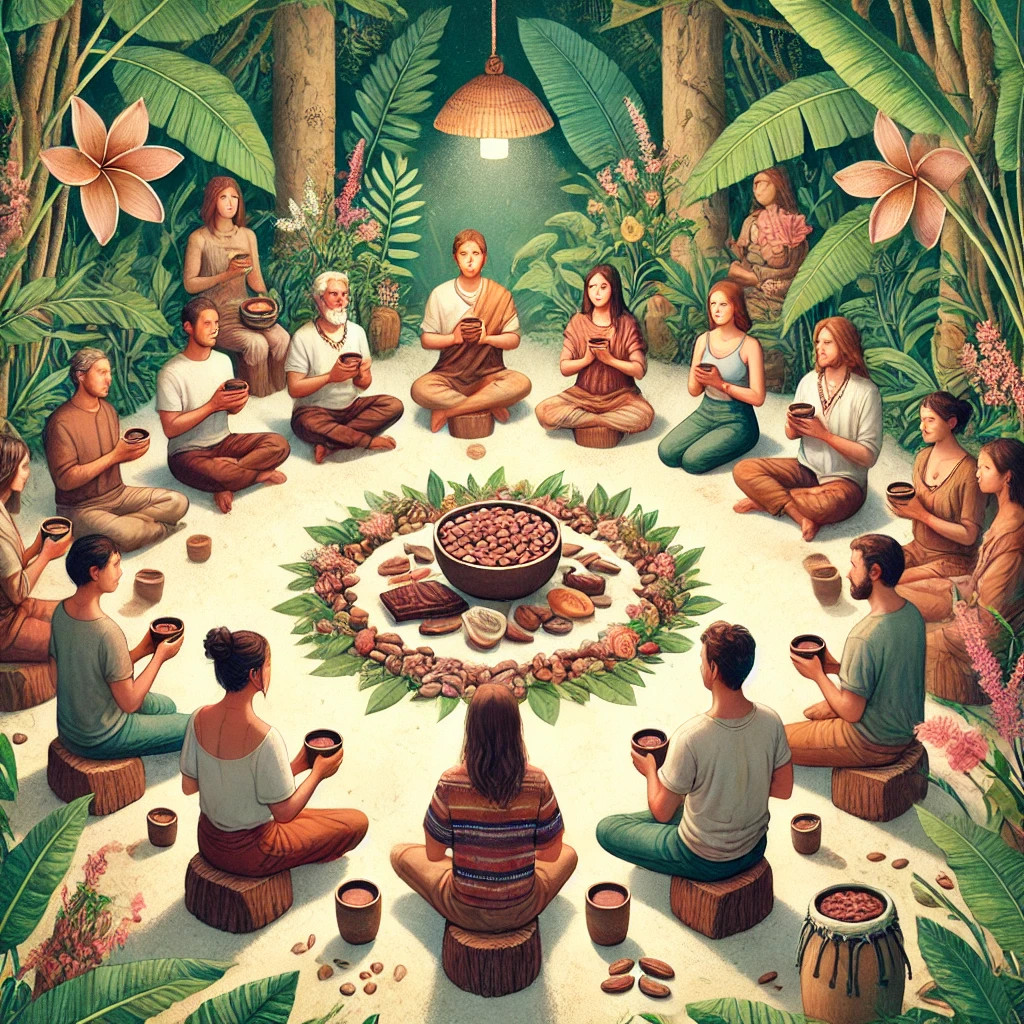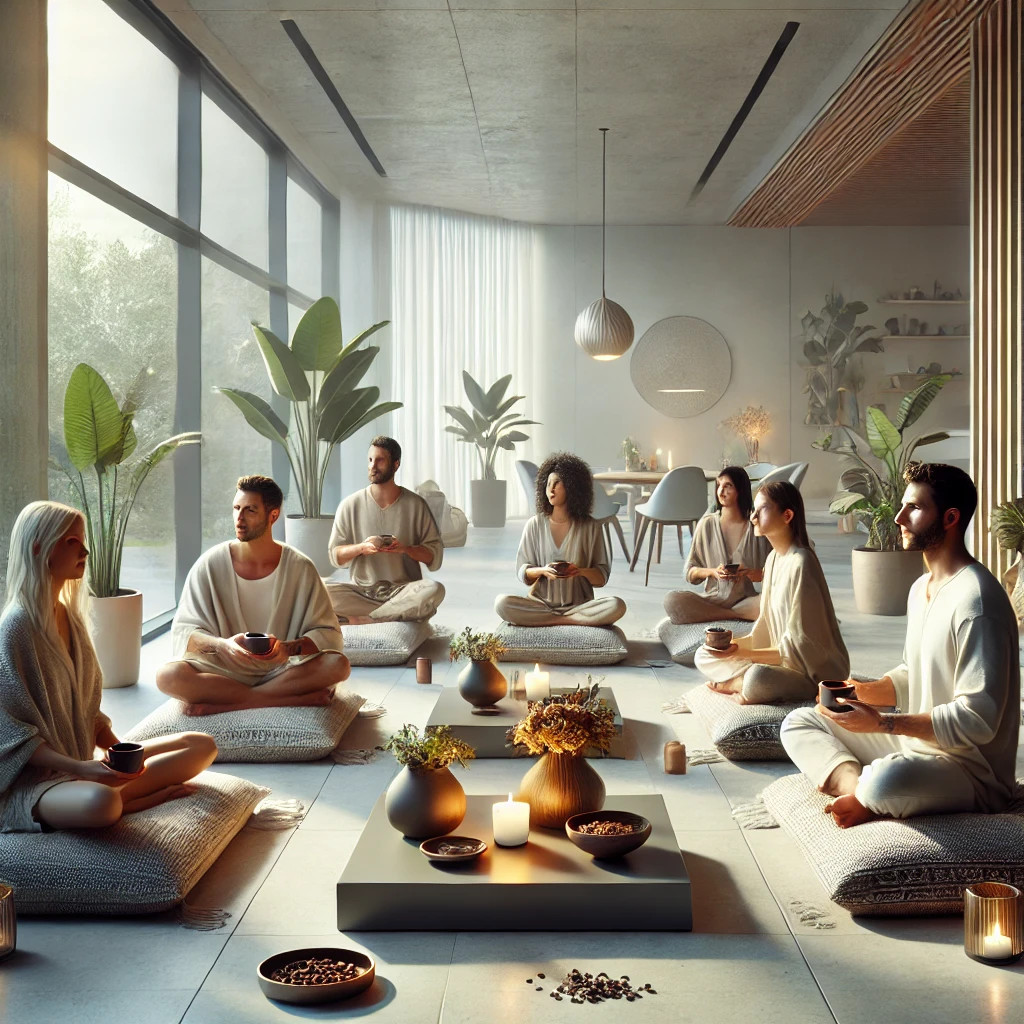 The Ancient Roots of Cacao in Ceremony
The Ancient Roots of Cacao in Ceremony
Cacao has a long and rich history, particularly within the ancient Mayan and Aztec civilisations, where it was considered a sacred and revered substance.
Far from the sugary treat we indulge in today, cacao was seen as a divine gift, often referred to as the "food of the gods."
Both cultures believed that cacao had spiritual properties, and it was used in various ceremonial contexts — but not in the way we now picture cacao ceremonies.
For the Mayans, cacao was used during key moments of life and death. It was incorporated into rituals marking major life transitions, such as marriages, births, and even funerals. The drink made from cacao, known as Xocolatl, was often bitter and spiced with chili, far nothing like the modern cocoa drinks of today. This cacao drink was believed to provide energy, offer spiritual insight, and act as a bridge between the physical and divine worlds.
The Aztecs also placed great importance on cacao, believing it was a gift from their god Quetzalcoatl. However, it was more commonly used as an offering to the gods or as part of other religious rites. In both cultures, cacao was often combined with other elements — chants, prayers, and even sacrifices — forming part of a broader ceremonial practice.
The cacao was sacred, but it wasn’t the sole focus of the ritual.
We know cacao had other important roles in society. It was used as a form of currency by the Aztecs, further underscoring its value. It was also consumed by warriors before going into battle, as the drink was thought to provide strength and stamina. The ceremonial and societal roles of cacao highlight just how versatile and vital this plant was to Mesoamerican cultures.
However, it’s important to note that in these historical contexts, cacao was used within ceremonies, rather than being the focal point.
The idea of a "cacao ceremony" as a standalone spiritual event, as we often see today, is a modern interpretation.
The Revival: Modern Cacao Ceremonies
Fast forward to today, and cacao has experienced a revival in the wellness and spiritual communities, especially in the West. Modern cacao ceremonies are quite different from the rituals of the Mayans and Aztecs. Instead of being part of broader religious rites, cacao is now often the main focus, with ceremonies built around its consumption.
In these modern settings, participants usually consume raw, unprocessed cacao in a ritualistic way.
The idea is that cacao helps open the heart, connect individuals to their emotions, and deepen their sense of mindfulness. These ceremonies often take place in a group setting, with elements like meditation, chanting, or sharing circles, all designed to foster introspection and connection.
While today’s ceremonies are inspired by ancient reverence for cacao, the focus has shifted from external religious offerings to internal spiritual exploration.
Participants often drink cacao as a way to "connect" with themselves, seek clarity, or find emotional release. It’s not about worshipping gods or preparing for battle, but more about personal healing and self-reflection.
From Sacred Drink to Spiritual Tool
It’s fascinating to see how cacao has evolved from a sacred drink used in ancient ceremonies into a tool for modern spiritual practice.
While today's cacao ceremonies might not directly mirror the rituals of the Mayans or Aztecs, they are still rooted in the deep respect and reverence that ancient cultures had for this powerful plant.
In a way, the modern cacao ceremony reflects the timeless human desire for connection — to the earth, to others, and to oneself.
The shift from historical ceremonial cacao use to today’s practices demonstrates cacao’s enduring place in our collective consciousness.
An Ancient Legacy, A Modern Practice
While historical cacao ceremonies didn’t exist in the same form we see today, cacao’s role in ritual and ceremony has been undeniably significant for millennia.
From the sacred Mayan and Aztec practices to the personal, introspective ceremonies of the present day, cacao has always been a source of connection and reverence.
Today’s cacao ceremonies might be a modern creation, but they carry the legacy of an ancient tradition, reminding us of the enduring power of cacao — not just as a food, but as a bridge between the physical and the spiritual.
